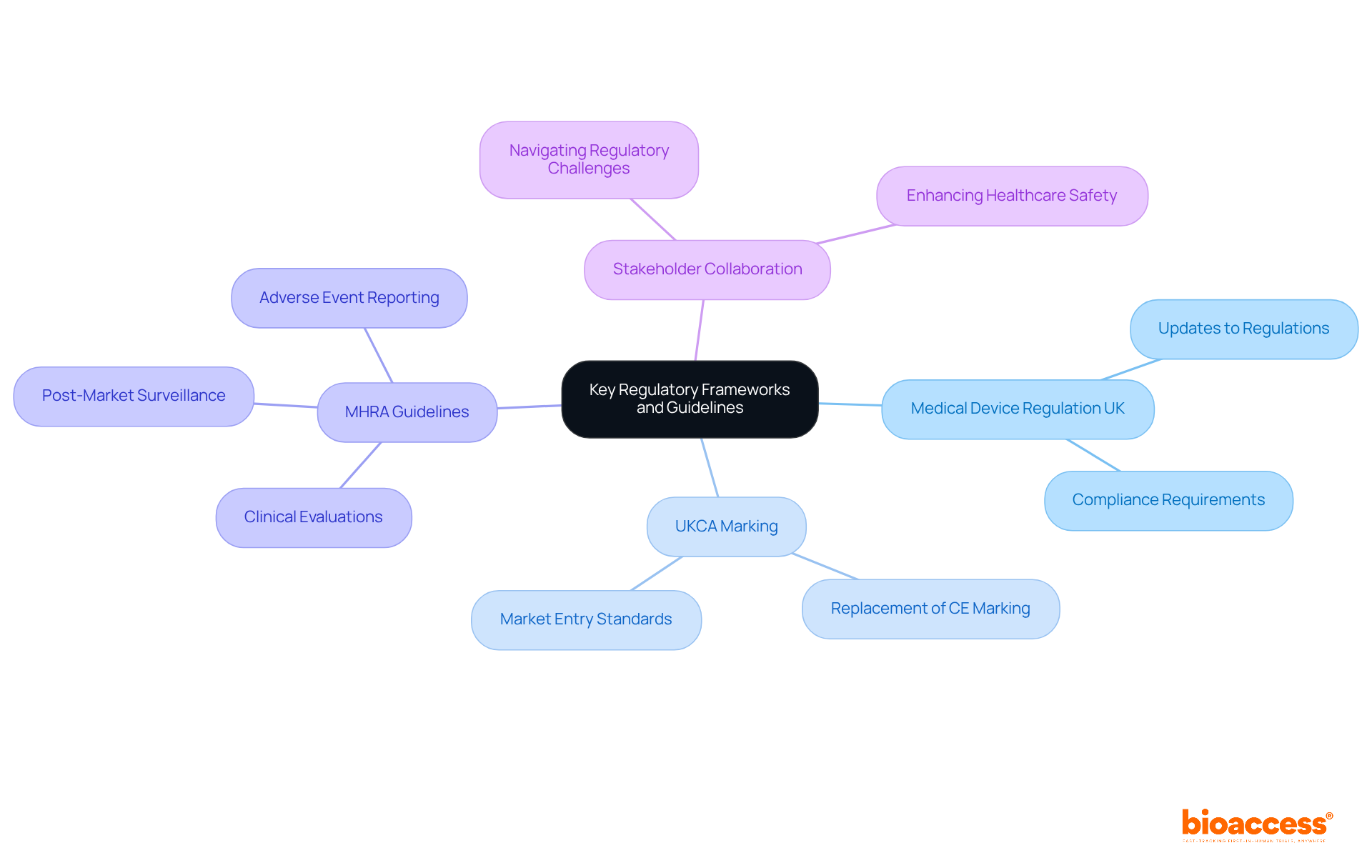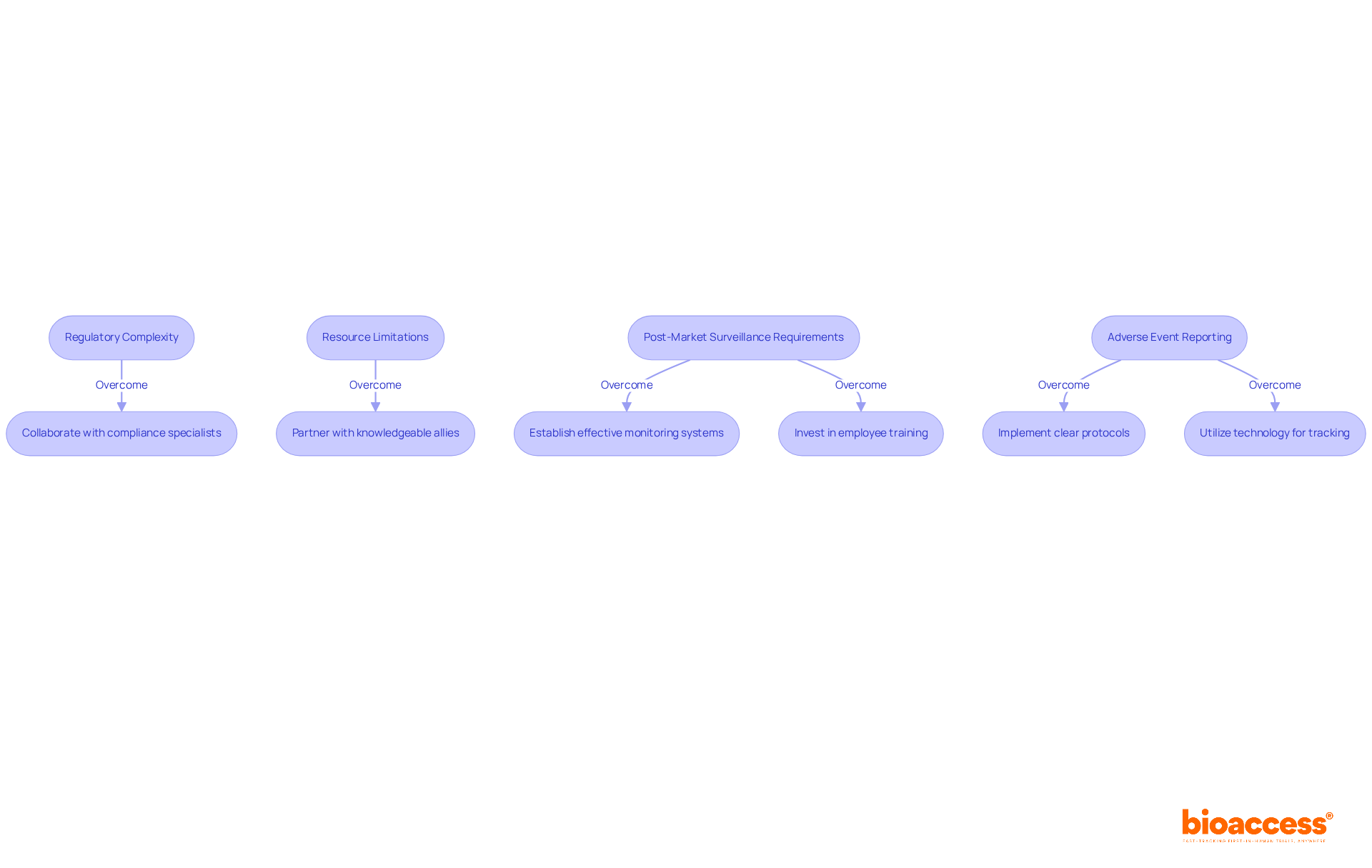


The landscape of medical device regulation in the UK is undergoing a significant transformation, especially in light of recent developments following Brexit. With the Medicines and Healthcare products Regulatory Agency (MHRA) leading the charge, grasping the nuances of the UK’s distinct regulatory framework is essential for anyone aiming to introduce healthcare products into the market. As we approach the 2025 deadline for substantial reforms, stakeholders are confronted with the pressing challenge of navigating complex compliance requirements while ensuring product safety and efficacy.
How can manufacturers effectively prepare for these changes and thrive in a rapidly evolving Medtech environment?
The medical device regulation UK is primarily overseen by the Medicines and Healthcare products Regulatory Agency (MHRA). This oversight has gained new significance following Brexit, as the UK has developed its own medical device regulation UK, distinct from the EU's Medical Device Regulation (MDR). Starting June 16, 2025, substantial reforms will be implemented, enhancing the traceability of healthcare instruments and ensuring compliance with safety and performance standards.
Understanding the medical device regulation UK is crucial for anyone looking to launch a healthcare product in the UK. It’s essential to navigate the requirements of medical device regulation UK, which includes both UKCA and CE marking. As the landscape evolves, staying informed about these regulations will not only facilitate compliance but also foster trust in the products being introduced to the market.
In summary, the upcoming reforms underscore the importance of collaboration and adherence to regulatory standards in clinical research. By preparing for these changes, stakeholders can better position themselves for success in the dynamic Medtech environment.

Understanding the key regulatory frameworks, particularly the medical device regulation UK, is crucial for anyone involved in clinical research. The medical device regulation UK has led to updates in the Regulations for Medical Equipment 2002 to align with new standards, making it essential for professionals to stay informed. Notably, the UKCA marking has replaced the CE marking for items entering the UK market, reflecting a shift in compliance requirements.
Moreover, the MHRA has provided comprehensive guidelines on medical device regulation UK, which outline the necessary steps for clinical evaluations, post-market surveillance, and the reporting of adverse events. These frameworks not only ensure that healthcare tools comply with medical device regulation UK but also guarantee their safety for use within the UK healthcare system.
As the Medtech landscape evolves, grasping these regulations becomes increasingly important. Collaboration among stakeholders is vital to navigate these challenges effectively. By staying abreast of these developments, professionals can contribute to a safer and more efficient healthcare environment.

To effectively navigate the medical device regulation UK, manufacturers must adhere to essential steps that ensure compliance and safety.
Device Classification: First, accurately categorize the equipment into one of three groups - Class I, II, or III - based on its intended use and associated risk level. Class I products, which include non-invasive items like wheelchairs, represent about 70% of the market, while Class III items encompass high-risk products such as pacemakers. Understanding this classification is crucial for compliance.
Conformity Evaluation: Next, conduct a conformity evaluation to confirm that the equipment meets safety and performance standards. This process may require clinical evaluations and rigorous testing, ensuring that the apparatus meets the necessary regulatory criteria. Such evaluations are vital for establishing trust in the product's safety.
Technical Documentation: Compile thorough technical documentation, which must include design specifications, risk assessments, and clinical data. This documentation is essential for demonstrating compliance and must be maintained throughout the product's lifecycle. Proper documentation not only supports regulatory requirements but also enhances product credibility.
Registration with MHRA: Register the product with the Medicines and Healthcare products Regulatory Agency (MHRA). This step is vital for legal market placement and requires accurate submission of all pertinent information. Manufacturers based outside the UK must appoint a UK responsible person to facilitate this process, ensuring that all regulatory obligations are met.
Post-Market Surveillance: Finally, establish a robust post-market surveillance plan to continuously monitor the device's performance and promptly report any adverse events. This ongoing vigilance is essential for maintaining regulations and ensuring user safety. A proactive approach to post-market surveillance reinforces commitment to quality and safety.
By diligently following these steps, manufacturers can simplify the compliance process in accordance with medical device regulation UK and enhance their chances of successful market entry in the UK. The MHRA's guidance emphasizes that adherence to medical device regulation UK is not only a legal obligation but also a commitment to patient safety and product quality. Ana Criado, with her extensive background in compliance matters and biomedical engineering, underscores the significance of these steps in ensuring adherence and promoting innovation in the healthcare equipment sector.

Manufacturers of medical devices in the UK face several significant challenges that demand attention:
Regulatory Complexity: The evolving regulatory landscape, particularly post-Brexit, presents a formidable challenge. Staying updated with changes from the Medicines and Healthcare products Regulatory Agency (MHRA) is crucial for compliance with medical device regulation UK. Collaborating with compliance specialists can provide valuable insights and guidance, enabling manufacturers to navigate these complexities effectively.
Resource Limitations: Smaller companies often grapple with limited resources necessary for compliance. Partnering with knowledgeable allies or delegating specific regulatory tasks can alleviate this burden, allowing these firms to focus on their core strengths while ensuring adherence to legal standards.
Post-Market Surveillance Requirements: The introduction of stringent post-market surveillance regulations necessitates rigorous monitoring, which can be resource-intensive. By establishing effective monitoring systems and investing in employee training, manufacturers can simplify compliance efforts and ensure they meet these requirements without straining their resources.
Adverse Event Reporting: Timely reporting of adverse events is vital for regulatory compliance, yet it can be challenging. Implementing clear protocols and utilizing technology for tracking and reporting can enhance efficiency and accuracy in this critical process.
By proactively addressing these challenges and developing strategic approaches, manufacturers can significantly improve their prospects for successful compliance with medical device regulation in the UK and enhance their market entry in the competitive landscape.

Mastering the complexities of medical device regulation in the UK is not just essential; it’s a critical step in ensuring that healthcare products meet the highest safety and performance standards. Understanding the evolving regulatory landscape is paramount, especially with the upcoming reforms set for June 2025. By familiarizing themselves with the UKCA marking and the specific requirements outlined by the MHRA, stakeholders can navigate the compliance process more effectively and foster trust in their products.
Key insights from this discussion highlight the importance of:
Addressing these areas allows manufacturers not only to meet regulatory requirements but also to enhance the safety and effectiveness of their medical devices.
In conclusion, the landscape of medical device regulation in the UK presents both challenges and opportunities for innovation. By proactively engaging with regulatory frameworks and collaborating with experts, manufacturers can position themselves for success in this competitive market. Embracing these guidelines transcends mere legal obligations; it signifies a commitment to patient safety and the advancement of healthcare technology. Taking decisive action now will pave the way for a more compliant and trustworthy Medtech environment in the future.
Who oversees medical device regulation in the UK?
The medical device regulation in the UK is primarily overseen by the Medicines and Healthcare products Regulatory Agency (MHRA).
How has Brexit affected medical device regulation in the UK?
Following Brexit, the UK has developed its own medical device regulation, which is distinct from the EU's Medical Device Regulation (MDR).
What significant changes will occur in medical device regulation starting June 16, 2025?
Starting June 16, 2025, substantial reforms will be implemented to enhance the traceability of healthcare instruments and ensure compliance with safety and performance standards.
Why is it important to understand medical device regulation in the UK?
Understanding medical device regulation in the UK is crucial for anyone looking to launch a healthcare product in the UK, as it helps navigate the requirements for compliance.
What are UKCA and CE marking in the context of medical devices?
UKCA and CE marking are certifications that indicate compliance with regulatory standards for medical devices in the UK and EU, respectively.
How can stakeholders prepare for the upcoming reforms in medical device regulation?
Stakeholders can prepare for the upcoming reforms by staying informed about regulatory changes and ensuring adherence to regulatory standards in clinical research, which will help position them for success in the Medtech environment.